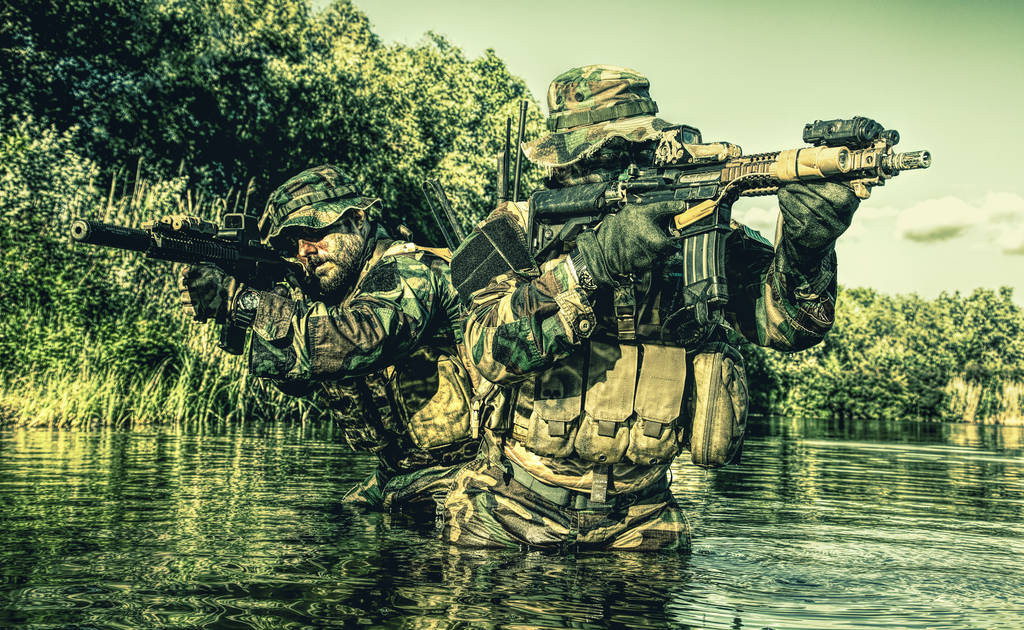Statistics on suicides associated with veterans from past wars are challenging to pinpoint precisely due to variations in record-keeping practices, evolving definitions of mental health conditions, and changes in the understanding of PTSD and other war-related mental health issues. However, here are some general trends and key points related to veteran suicides from major U.S. conflicts so you understand that PTSD is not just associated with Vietnam or wars in the Middle East, but with war period.
World War I and World War II
- World War I (1914-1918): Data on suicide rates among World War I veterans is limited, but reports suggest that many veterans struggled with what was then called “Shell Shock.” While specific suicide rates are not well- documented, it is understood that many veterans suffered from long-term psychological issues that could have contributed to elevated suicide rates post-war.
- World War II (1939-1945): Similar to World War I, exact suicide statistics for World War II veterans are sparse. However, it is known that “Battle Fatigue” or “Combat Fatigue” affected a significant number of soldiers, leading to psychological struggles after the war. As with previous conflicts, many veterans faced long-term issues that could have increased the risk of suicide.
Korean War (1950-1953)
- The Korean War is often referred to as the “Forgotten War,” and this extends to the mental health challenges faced by its veterans. While specific suicide rates are not widely reported, the trauma of this conflict led to what was then described as “Combat Fatigue,” similar to World War II. The lack of adequate mental health support likely contributed to suicides among these veterans, although precise numbers are difficult to find.
Vietnam War (1955-1975)
- Suicide Rates: Vietnam veterans have been reported to have high suicide rates, with estimates suggesting that more Vietnam veterans have died by suicide than were killed during the war itself (approximately 58,000 U.S. military deaths in Vietnam). Some studies have estimated that the suicide rate among Vietnam veterans could be as much as 1.7 times higher than that of their non-veteran peers.
Gulf War (1990-1991)
- While the Gulf War was shorter in duration, veterans from this conflict have also faced mental health challenges, often categorized under “Gulf War Syndrome.” The long-term effects of the war, including PTSD, have contributed to increased suicide rates among these veterans, although specific numbers vary by study.
Iraq and Afghanistan Wars (2001-Present)
- Suicide Rates: Veterans of the Iraq and Afghanistan wars have faced particularly high suicide rates. According to data from the Department of Veterans Affairs (VA), the suicide rate for veterans who served during these conflicts is significantly higher than that of the general population. In recent years, the VA has reported that veterans of these conflicts have a suicide rate of approximately 30 per 100,000, compared to about 17 per 100,000 for the general U.S. population.
- Impact of PTSD and TBI: The use of improvised explosive devices (IEDs) and the nature of the conflict have led to high rates of PTSD and TBI among these veterans, further contributing to the suicide risk.
Overall Trends
- General Veteran Suicide Rates: Overall, the VA estimates that approximately 17 veterans die by suicide each day. This statistic has remained relatively consistent in recent years, despite efforts to reduce the rate. The suicide rate for veterans is approximately 1.5 times higher than that of non-veterans, with young veterans (ages 18-34) particularly at risk.
These statistics highlight the persistent challenge of veteran suicide across all wars. While the exact numbers may vary, the trend of elevated suicide rates among veterans is a constant, driven by the lasting psychological and physical effects of war.
The Evolution of Understanding and Treating War-Related PTSD, TBI, and Suicide
War has always been a crucible of intense human experience, often leaving those who endure its horrors with deep psychological and physical scars. While the terminology and understanding of conditions like Post-Traumatic Stress Disorder (PTSD) and Traumatic Brain Injury (TBI) have evolved over time, the phenomena themselves have been constant companions of warfare throughout history. This article explores the historical trajectory of PTSD and TBI across U.S. wars, the military’s evolving responses to these conditions, and how advancements in understanding have shaped modern treatment approaches.
Historical Context: PTSD and TBI Across Wars
PTSD and TBI have been recognized under different names and descriptions across various wars, reflecting the changing understanding of these conditions.
- Civil War (1861-1865): During the American Civil War, soldiers exhibited symptoms we now associate with PTSD and TBI, but these were poorly understood at the time. Soldiers who displayed symptoms of extreme anxiety, depression, and psychological collapse were often said to suffer from “Soldier’s Heart” or “Da Costa’s Syndrome,” a condition thought to be related to heart disease. Treatment was rudimentary, often involving rest or dismissal from service, but there was little understanding of the underlying psychological trauma.
- World War I (1914-1918): The First World War introduced the term “Shell Shock” to describe soldiers who exhibited symptoms of PTSD, often following exposure to the intense artillery barrages characteristic of trench warfare. Symptoms included tremors, nightmares, and severe anxiety. Shell Shock was initially thought to result from physical damage to the brain caused by the concussive effects of explosions. Treatment was inconsistent, ranging from rest and psychotherapy to more severe methods like electric shock therapy, reflecting the lack of a cohesive understanding of the condition.
- World War II (1939-1945): By World War II, the term “Combat Fatigue” or “Battle Fatigue” replaced Shell Shock. The symptoms were similar—anxiety, nightmares, flashbacks—but there was a greater emphasis on the psychological aspect of the condition. The military attempted to treat soldiers closer to the front lines with the belief that a quick return to duty was beneficial. This approach, known as “PIE” (Proximity, Immediacy, Expectancy), focused on treating soldiers as quickly as possible to return them to battle, although long-term psychological support was still lacking.
- Korean War (1950-1953) and Vietnam War (1955-1975): The Korean and Vietnam Wars saw continued use of the term “Combat Fatigue,” though the understanding of psychological trauma deepened. During the Vietnam War, the term “Post-Vietnam Syndrome” emerged, highlighting the long-lasting effects of combat trauma on veterans. The Vietnam War is particularly noted for the high incidence of PTSD among returning veterans, many of whom received little to no support upon returning home, exacerbating their struggles. The condition would later be officially recognized as PTSD in the Diagnostic and Statistical Manual of Mental Disorders (DSM-III) in 1980, marking a significant shift in the medical and psychological understanding of war-related trauma.
- Gulf War (1990-1991) to the Global War on Terror (2001-Present): The conflicts of the late 20th and early 21st centuries have seen a more sophisticated understanding of PTSD and the introduction of TBI as a recognized condition. The Gulf War, with its brief but intense combat operations, led to a recognition of “Gulf War Syndrome,” which included symptoms of PTSD and TBI among others. The wars in Iraq and Afghanistan have seen unprecedented numbers of veterans diagnosed with PTSD and TBI, partly due to the widespread use of improvised explosive devices (IEDs) and the multiple deployments that characterized these conflicts.
Evolving Understanding and Treatment
The military’s approach to PTSD and TBI has evolved significantly over time, driven
by advancements in psychological and neurological sciences, as well as by the
pressing needs of veterans and active-duty service members.
- From Stigma to Recognition: Historically, PTSD and its predecessors were often stigmatized, with affected soldiers seen as weak or lacking in moral fiber. This stigma prevented many from seeking help, leading to chronic psychological issues and, in some cases, suicide. The official recognition of PTSD in 1980 was a turning point, helping to destigmatize the condition and promote the development of effective treatment protocols. The military began to acknowledge that PTSD was a legitimate medical condition resulting from the extreme stress of combat, rather than a character flaw.
- Advancements in Psychological Treatment: Over the years, the military has increasingly recognized the importance of psychological support for soldiers and veterans. Cognitive Behavioral Therapy (CBT), Eye Movement Desensitization and Reprocessing (EMDR), and other forms of psychotherapy have become standard treatments for PTSD. The military has also implemented programs aimed at early identification and intervention, such as pre-deployment mental health screenings and post-deployment evaluations. These programs are designed to catch symptoms of PTSD early, allowing for timely treatment and reducing the risk of chronic issues.
- Understanding TBI: The recognition of TBI as a distinct condition is relatively recent, largely emerging from the experiences of soldiers in Iraq and Afghanistan. The widespread use of body armor has allowed soldiers to survive blasts that would have been fatal in previous conflicts, but the resulting concussive forces have led to an increase in TBIs. TBI can result in a range of symptoms, from cognitive impairments to mood disorders, and its treatment often involves a combination of physical, cognitive, and emotional therapies. The military has developed comprehensive TBI treatment programs, including specialized rehabilitation centers that focus on the unique needs of veterans with brain injuries.
- Comprehensive Care Approaches: The modern military has adopted a more holistic approach to treating PTSD and TBI, recognizing that these conditions often co-occur and can affect every aspect of a veteran’s life. Treatment plans now often include a combination of psychotherapy, medication, physical rehabilitation, and social support. The VA and Department of Defense have invested in research to better understand these conditions and develop more effective treatments. There is also a growing emphasis on the role of family and community support in the recovery process, with programs designed to educate and involve loved ones in treatment.
Challenges and Progress
Despite these advancements, significant challenges remain. Stigma, while reduced, still exists, and many veterans remain reluctant to seek help. The complex nature of PTSD and TBI, which often involve overlapping symptoms and co-occurring conditions like depression and substance abuse, can make treatment difficult. Moreover, the sheer scale of the problem—exacerbated by prolonged conflicts and multiple deployments—strains available resources.
However, there is reason for optimism. Advances in neuroimaging and other technologies are improving our understanding of how PTSD and TBI affect then brain, leading to more targeted treatments. The military’s commitment to mental health, demonstrated by increased funding for research and the development of comprehensive care networks, shows a recognition that the psychological wounds of war are as significant as the physical ones.
Conclusion
War has always produced significant psychological and physical trauma, manifesting in conditions now known as PTSD and TBI. Over time, our understanding of these conditions has evolved, leading to improved treatment and support for those affected. From the rudimentary and often misguided treatments of the past to today’s comprehensive care approaches, the military’s response to PTSD and TBI reflects broader societal advancements in understanding mental health and the human brain.
The journey from “Soldier’s Heart” and “Shell Shock” to the modern-day diagnoses of PTSD and TBI is a testament to the progress made in recognizing and treating the invisible wounds of war. As our understanding continues to grow, so too does our ability to provide effective care, offering hope to the countless veterans who have sacrificed so much in service to their country. Through continued research, compassionate care, and a commitment to reducing stigma, we can help ensure that no veteran is left to struggle alone with the aftermath of war.

